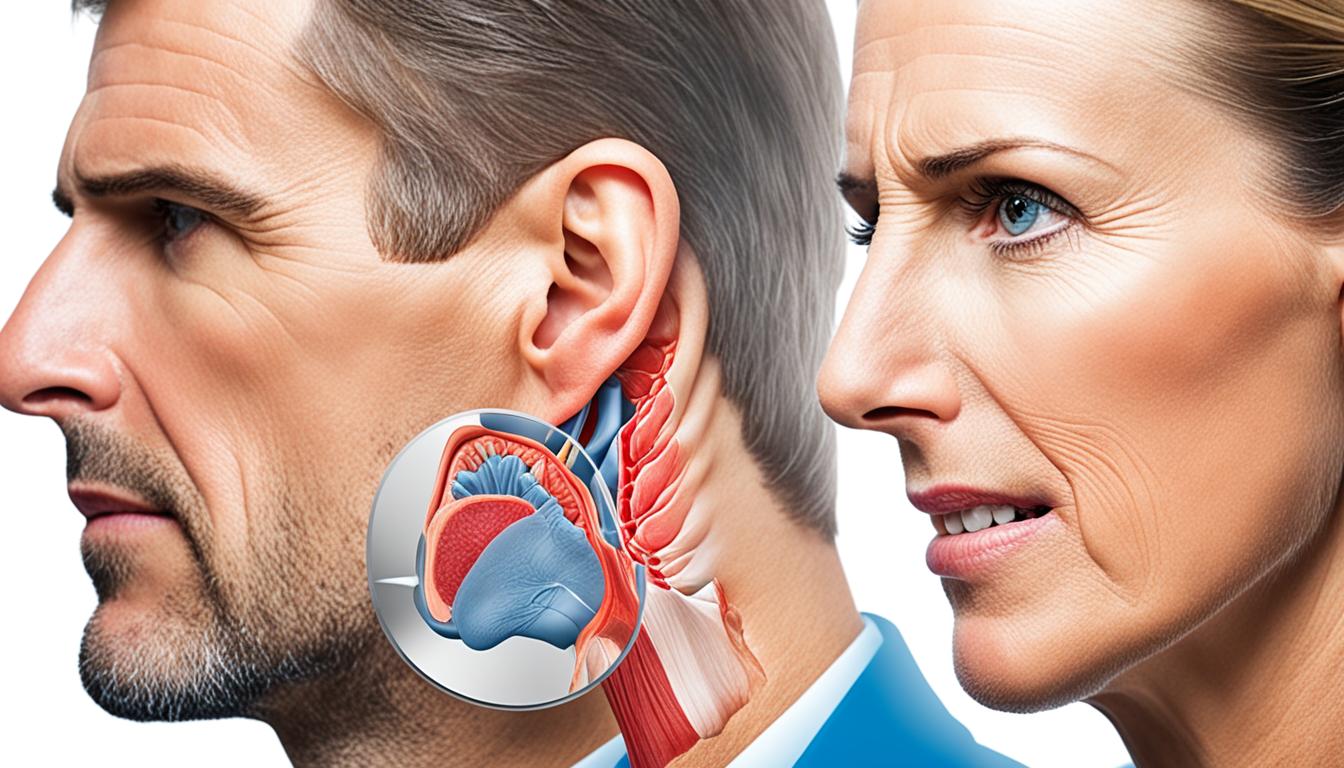Temporomandibular joint (TMJ) disease affects the jaw’s bones and muscles. It causes issues with jaw movement and pain. These problems can make simple actions like chewing or talking difficult.
New treatments like Regentime therapy are giving hope. This therapy uses autologous bone marrow-derived stem cells. It has given positive results in some cases, easing the pain and improving jaw function. Traditional treatments don’t always work well for everyone.
Key Takeaways:
- TMJ disorders can lead to morphological and functional abnormalities in the jaw joint.
- Multiple factors contribute to the progression of TMJ disorders.
- Traditional treatment options for TMJ disorders may not provide long-term relief.
- Regentime therapy, utilizing autologous bone marrow-derived stem cells, shows promise in clinical follow-ups.
- Stem cell therapy offers a new approach to the treatment of TMJ disorders.
Understanding Temporomandibular Joint (TMJ) and its Functions
The temporomandibular joint (TMJ) is key for many movements we take for granted. It links the jawbone to the skull. This allows us to open and close our mouths, chew, talk, and make facial expressions.
But the TMJ does more. It helps us keep ear pressure right and make the jaw move. All of these are vital for our daily lives and health.
When the TMJ doesn’t work well, it affects our daily routines. It can cause discomfort and pain.
Diagnosing and Understanding TMJ Disorders
Diagnosing TMJ disorders needs a detailed approach. This includes getting the patient’s health history and checking their symptoms. It also involves looking closely at them with a physical exam and special imaging. Finding out early is key to treating TMJ disorders well and avoiding future issues.
Medical History
A detailed medical history is key to diagnosing TMJ problems. Doctors ask about a person’s past health issues, surgeries, any big injures, and what medicines they’ve taken. This info is crucial. It helps spot factors that might have led to TMJ problems.
Symptoms Assessment
Looking into a patient’s symptoms is important too. Common signs of TMJ are pain, a stiff jaw, clicking or popping noises, troubles opening or closing the mouth, and headaches. Doctors learn a lot by asking how bad, how long, and how often these symptoms happen. They also see how much daily life is affected.
Physical Examination
Doctors do a careful check-up to find signs of TMJ issues. They feel for sore spots, swelling, or anything else not normal around the jaw and face. Checking the jaw’s movement is part of this too. It tells them if there’s any issue. This exam points them towards the possible cause of the pain.
Diagnostic Imaging
Imaging tests are very useful for seeing inside the jaw joint. Things like dental X-rays, CT scans, or MRIs show bone and tissue problems. They give clear images of the bones, the disc, and more. This helps doctors see what’s wrong and plan the right treatment.
Combining a full health history, symptom check, and physical exam, with imaging tests is powerful. It leads to a good understanding of the TMJ disorder. This detail is vital for the best treatment to improve the patient’s health.
Innovative Treatment Options for TMJ Disorders: Stem Cell Therapy
The Regentime procedure is a new way to help with TMJ disorders. It uses the patient’s own stem cells. A 37-year-old woman got this treatment and saw great improvement.
Stem cell therapy is very promising for TMJ problems. It helps by fixing damaged tissues and reducing swelling. This therapy brings new hope to those with TMJ issues.
This approach in the Regentime procedure is a big step forward. It uses your own stem cells for healing. So, it aims for better results and lasting relief.

